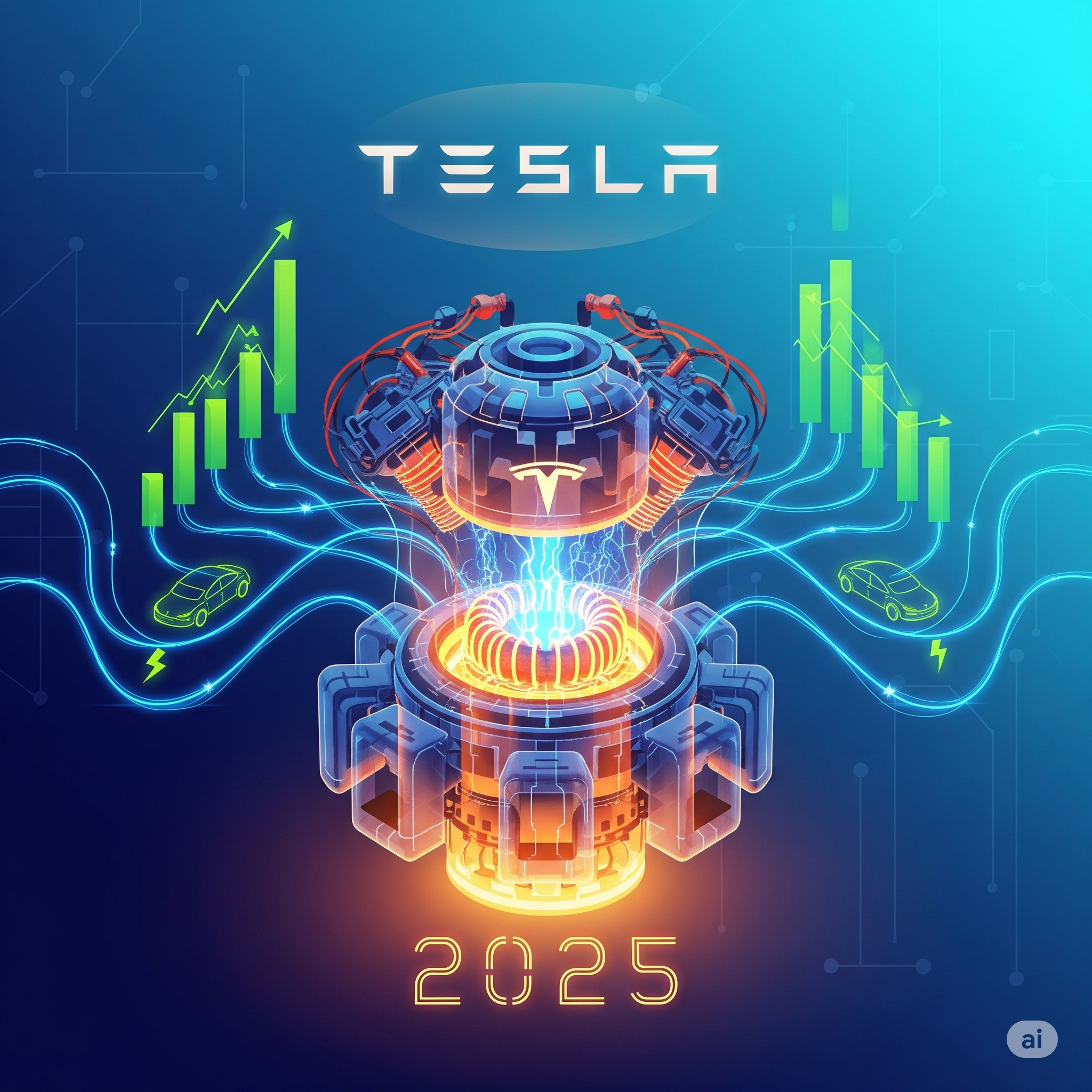Ticker: TSLA
Market Cap (August 2025): ~$720 billion
Price (as of August 6, 2025): ~$225
52-week range: $138 – $299
Forward P/E: ~55x
EV/EBITDA: ~37x
Rating: Neutral to cautiously bullish (short-term headwinds, long-term optionality)
The Narrative: Disruption Hero, Now Facing Mature Market Headwinds
Tesla has long been viewed not just as a car company, but as a technology and energy transformation juggernaut. From pioneering electric vehicle (EV) adoption to building the most vertically integrated battery supply chain in the world, Tesla redefined how public markets value automakers.
But as of 2025, Tesla is navigating a more complicated macro and competitive environment. Demand is plateauing in key EV markets like Europe and China, and U.S. EV incentives have tightened. Combine that with intensifying price wars, rising production costs, and questions about autonomous driving progress — and Tesla’s growth engine looks less unstoppable than it did in 2020–2021.
Q2 2025 Results: A Mixed Bag
Tesla’s latest quarterly earnings (Q2 2025) reflected this complexity:
- Revenue: $24.3 billion (–3% YoY)
- Automotive Gross Margin: 16.4% (down from 18.8% YoY)
- Net Income: $2.15 billion (–7% YoY)
- Free Cash Flow: $950 million (down from $2.1 billion YoY)
- EPS: $0.62 vs. $0.68 expected
The main issue wasn’t demand per se — Tesla still delivered 464,000 vehicles globally — but margin erosion due to aggressive price cuts in China, where BYD and other EV makers have triggered a race to the bottom.
Tesla has responded with operating efficiency gains and expanded cost-cutting initiatives at Giga Shanghai and Giga Berlin, but these haven’t fully offset the margin compression.
Key Insight: For the first time in years, Tesla is facing top-line stagnation and margin pressure at the same time.
Product & Tech Pipeline: Too Quiet for Too Long?
The long-promised Cybertruck is still being rolled out in limited volumes and remains more of a brand halo than a meaningful revenue contributor. Initial reviews have been mixed — with some praising the performance, but others citing quality-control and utility tradeoffs.
More concerning: Tesla has yet to announce a firm timeline for the much-anticipated “Model 2” (expected to be a $25,000 EV). While CEO Elon Musk teased new platform developments during the Q1 2025 call, investors are getting impatient as competitors — including Hyundai, VW, and Xiaomi — launch EVs in the $20K–$30K range.
Meanwhile, the Full Self-Driving (FSD) v12 beta has made progress, but regulatory acceptance and scalability remain challenges. Tesla continues to recognize FSD revenue under a deferred model, and uptake remains limited in Europe.
Opportunity: If Tesla launches a mass-market Model 2 by late 2026, it could reignite volume growth and pressure legacy automakers.
Risk: Continued delays may cause Tesla to miss the window to dominate the next wave of EV growth.
Energy & AI: Hidden Growth Engines?
One area where Tesla continues to quietly execute is energy storage. Megapack deployments are up 57% YoY, and Tesla’s energy division generated $2.1 billion in Q2 2025 revenue — a record. Margins in this segment are actually improving due to better lithium sourcing deals and increasing demand from grid operators globally.
Tesla also recently announced Dojo V2, its in-house AI training chip designed to accelerate FSD and robotics development. While still in early stages, analysts believe Tesla could eventually license Dojo as an AI inference service — creating a new revenue vertical.
Valuation: Premium (Still), but More Reasonable
Tesla currently trades at ~55x forward earnings, a far cry from the 120x–150x multiples seen during the peak of 2021. While still rich compared to traditional automakers (Ford and GM trade below 7x), Tesla’s valuation is increasingly anchored to long-term bets: autonomous driving, energy, AI, and vertical integration advantages.
According to consensus estimates:
- 2025 EPS: ~$4.10
- 2026 EPS Estimate: ~$5.35
- Implied PEG ratio: ~2.6x — not cheap, but below historical norms for Tesla.
Some bulls argue that Tesla is a “call option” on multiple markets (autos, AI, energy, robotics). Bears counter that the EV story is maturing and the rest is still speculative.
Final Take: Wait for Execution Before Paying for the Dream
Tesla remains a compelling long-term growth story — but it’s one that now requires execution, not just vision. Margins are under pressure, volume growth is slowing, and regulatory and competitive risks are rising.
Still, Tesla’s balance sheet strength ($25B in cash), AI capabilities, and energy business are durable assets. If it delivers on new models and reignites volume growth — especially at lower price points — the stock could re-rate higher.
Investor Strategy:
- Long-term holders: Stay patient, but monitor margin trends closely.
- New buyers: Consider accumulating on dips below $200, when risk/reward improves.
- Traders: Volatility around product launches (Cybertruck, FSD updates) could offer short-term setups.
Sources
- Tesla Investor Relations: https://ir.tesla.com
- CNBC Q2 Earnings Summary: https://www.cnbc.com/tesla-earnings
- Bloomberg EV Market Report (July 2025)
- Reuters: Tesla Megapack Deployment Update – July 2025
- MarketWatch Analyst Estimates (TSLA)
